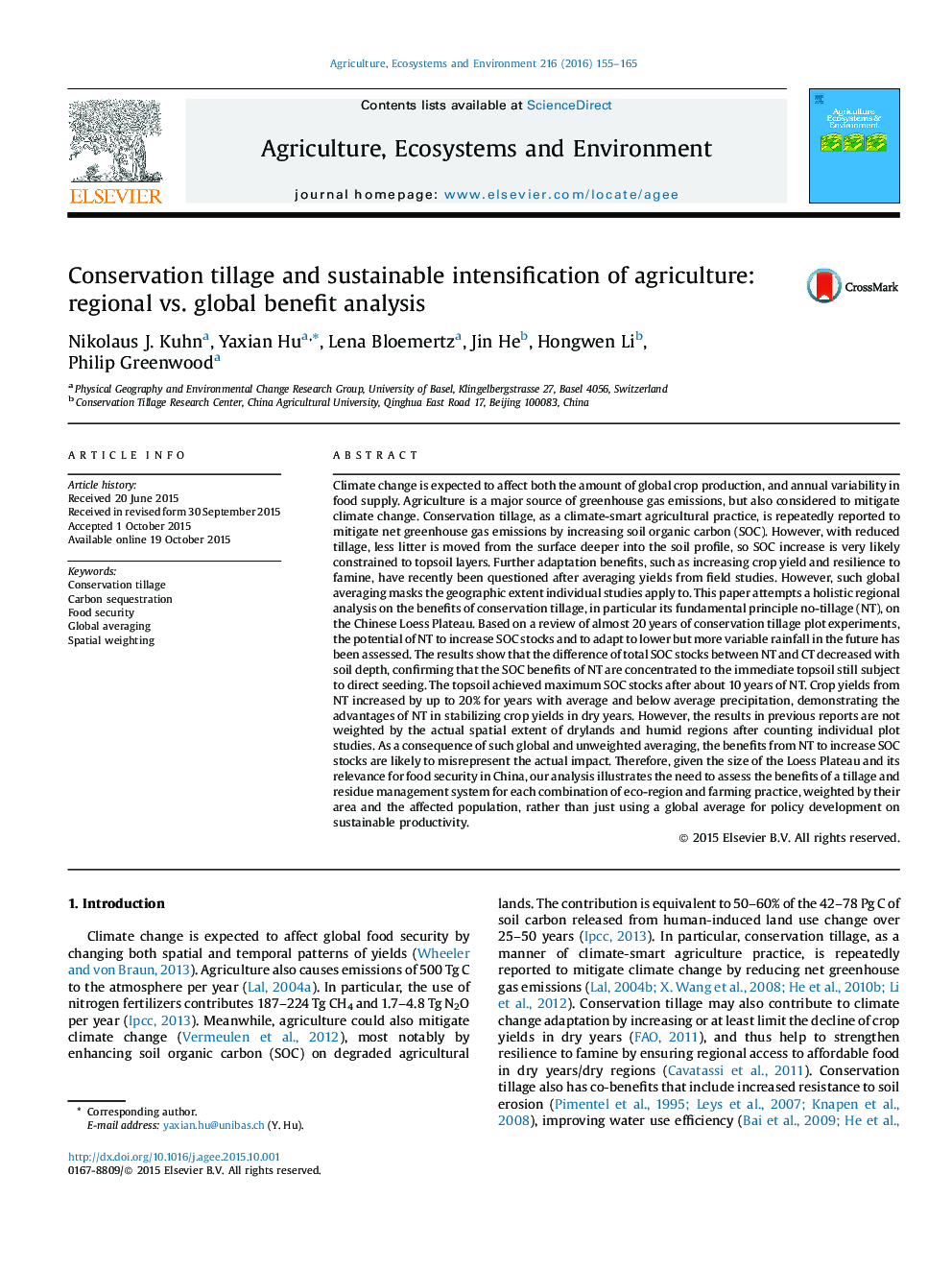| کد مقاله | کد نشریه | سال انتشار | مقاله انگلیسی | نسخه تمام متن |
|---|---|---|---|---|
| 2413636 | 1552036 | 2016 | 11 صفحه PDF | دانلود رایگان |
• Investigation on almost 20 years of no-till studies across Chinese Loess Plateau.
• Differences of SOC between no-tillage and conventional tillage decrease with soil depth or after about 10 years.
• Commonly used linear extrapolation tends to overestimate the potential of no-tillage to improve SOC stocks.
• Global averaging in crop yield change (−5.7%) masks the geographic extent of benefits individual studies illustrate (+14.2%).
• Policy decisions to promote no-tillage should be based on agro-eco-region analysis, not global averaging.
Climate change is expected to affect both the amount of global crop production, and annual variability in food supply. Agriculture is a major source of greenhouse gas emissions, but also considered to mitigate climate change. Conservation tillage, as a climate-smart agricultural practice, is repeatedly reported to mitigate net greenhouse gas emissions by increasing soil organic carbon (SOC). However, with reduced tillage, less litter is moved from the surface deeper into the soil profile, so SOC increase is very likely constrained to topsoil layers. Further adaptation benefits, such as increasing crop yield and resilience to famine, have recently been questioned after averaging yields from field studies. However, such global averaging masks the geographic extent individual studies apply to. This paper attempts a holistic regional analysis on the benefits of conservation tillage, in particular its fundamental principle no-tillage (NT), on the Chinese Loess Plateau. Based on a review of almost 20 years of conservation tillage plot experiments, the potential of NT to increase SOC stocks and to adapt to lower but more variable rainfall in the future has been assessed. The results show that the difference of total SOC stocks between NT and CT decreased with soil depth, confirming that the SOC benefits of NT are concentrated to the immediate topsoil still subject to direct seeding. The topsoil achieved maximum SOC stocks after about 10 years of NT. Crop yields from NT increased by up to 20% for years with average and below average precipitation, demonstrating the advantages of NT in stabilizing crop yields in dry years. However, the results in previous reports are not weighted by the actual spatial extent of drylands and humid regions after counting individual plot studies. As a consequence of such global and unweighted averaging, the benefits from NT to increase SOC stocks are likely to misrepresent the actual impact. Therefore, given the size of the Loess Plateau and its relevance for food security in China, our analysis illustrates the need to assess the benefits of a tillage and residue management system for each combination of eco-region and farming practice, weighted by their area and the affected population, rather than just using a global average for policy development on sustainable productivity.
Journal: Agriculture, Ecosystems & Environment - Volume 216, 15 January 2016, Pages 155–165
